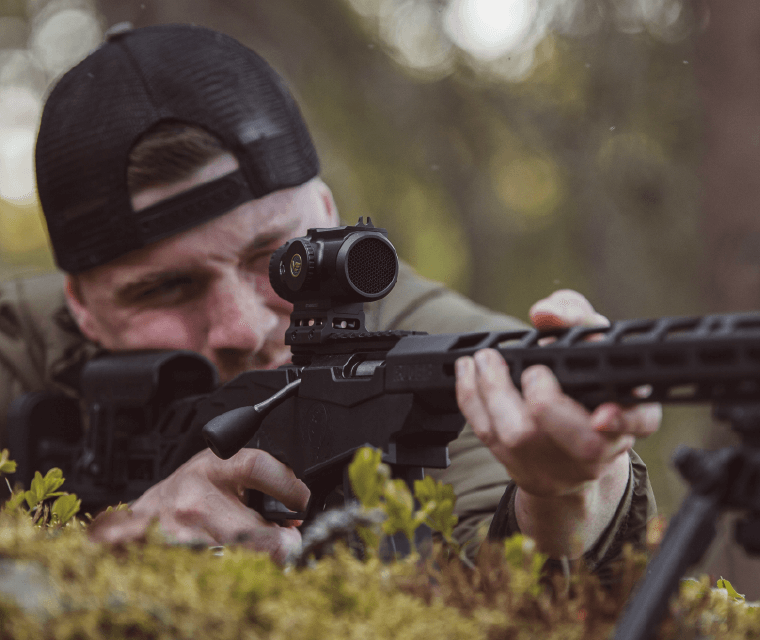Evelyn: Stephen, do you have any knowledge about PARALLAX? Should I choose a parallax-free scope or a parallax adjustable scope?
Stephen: Oh, a nice question. Let's start with what parallax is.
Evelyn: Okay, that’s exactly what I want to know.
Stephen: From Wikipedia parallax is a displacement or difference in the apparent position of an object viewed along two different lines of sight. Parallax arises due to change in viewpoint occurring due to motion of the observer, of the observed, or of both.
We can see it clearly in Picture 0, observe the object from viewpoint A, the object is on the blue background; observe the object from viewpoint B, the object is on the red background. This is Parallax.

Evelyn: It’s kind of complicated for me, I'm still a little confused.
Stephen: Take Picture 1 a simple example for easy understanding.
Object A and object B are placed on different planes. When we observe from straight ahead, object A and object B coincide, but once we shift the angle slightly to the left, the relative positions of A and B change and they no longer coincide.

Evelyn: Yeah, it’s obvious!
Stephen: While, if we set them at almost the same plane or even coincide as picture 2 shows, no matter how we move our eyes or head, the relative positions of object A and object B always remain coincident.

Evelyn: Wow, I got it! It is clear and easy to understand. But is this the same as the scope parallax?
Stephen: Yeah, in a scope, Object A and Object B in the previous example turns to be Reticle and Image (Picture 3). When reticle and image are almost on the same plane, there is almost no parallax, conversely, parallax appears.

Evelyn: How will parallax influence our shooting?
Stephen: Combined with the example I just gave, when the reticle and the image are not on the same plane, the image will be unclear and once we move our eyes or head, the position that the crosshair is aiming at will change. The position where we want the bullet to fall will be not accurate.
If the reticle and the image are on the same planes. No matter how you move your eyes, it will keep the crosshairs fixed on the target.

Evelyn: It does matter a lot.
Stephen: Yeah, to make sure the accuracy, you need to adjust the parallax setting before shooting and every time you change your shooting range.
Evelyn: So how to adjust parallax setting?
Stephen: In theory, we only need to adjust the image to be on the same plane as the reticle to achieve free parallax.
Refer to Picture 5, the left one is the scope with AO(Adjustable Objective) Adjustment. The middle one is the scope with side focus adjustment. Both of them can effectively eliminate parallax.

Evelyn: How about the last one? It does not have either AO adjustment or side focus adjustment.
Stephen: This is the scope with fixed parallax. This kind of scopes usually set their parallax free at 50 or 100 Yards. Most of them are low magnification scopes for general shooting. Cuz usually, the higher the magnification the more parallax is likely to occur.
Evelyn: In which situation should we have a scope with parallax adjustment?
Stephen: Generally speaking, for precision shooting, LR, XLR and competition will need a good parallax adjustable scope.
Evelyn: I get it, I'll pick a scope based on what I learned today, thank you!
Stephen: You are welcome.
Join our Facebook community to know more about Vector Optics!




























































































































































